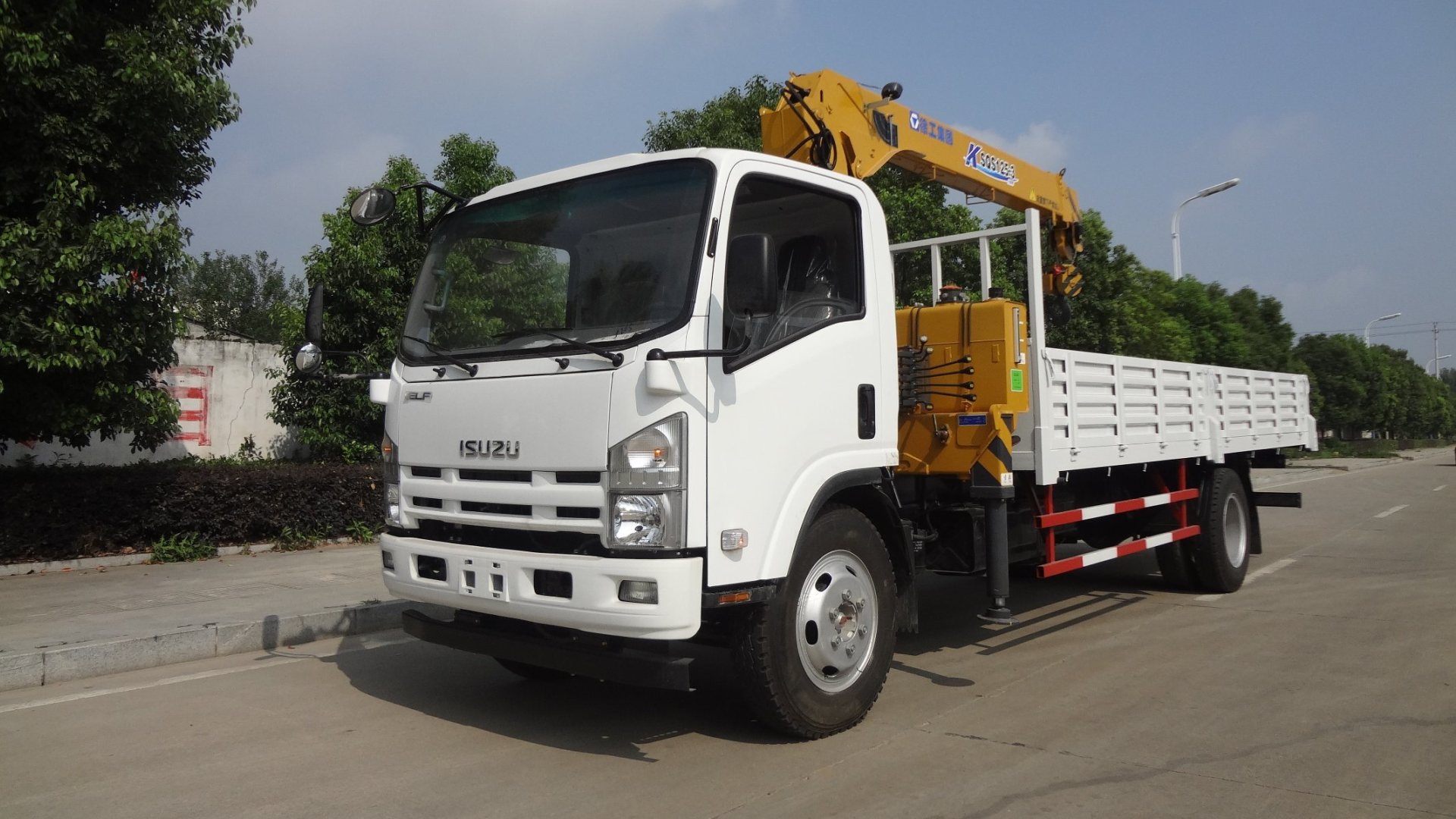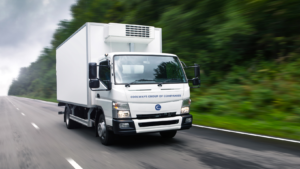How Does A Crane Truck Work – Hydraulic cranes are very simple by design but can perform Herculean tasks that would otherwise seem impossible. In a matter of minutes, these machines are able to raise multi-ton bridge beams on highways, heavy equipment in factories and even lift beachfront houses onto pilings.
Hydraulic truck cranes are also used to lift killer whales like Shamu out of water tanks when places like Sea World ship the whales to new destinations.
When watching a hydraulic truck crane in action, it’s hard to believe just how much weight it’s moving because it deals with these multi-ton objects with relative ease. Hydraulic truck cranes vary in lifting power. It’s easy to tell how much a particular hydraulic truck crane can lift just by the name of it:
A 40-ton crane can lift 40 tons (80,000 lb or 36,287 kg).
All About Hydraulics
The hydraulic crane is based on a simple concept — the transmission of forces from point to point through a fluid. Most hydraulic machines use some sort of incompressible fluid, a fluid that is at its maximum density. Oil is the most commonly used incompressible fluid for hydraulic machines, including hydraulic cranes.
In a simple hydraulic system, when a piston pushes down on the oil, the oil transmits all of the original force to another piston, which is driven up. In a simple hydraulic system, when one piston is pushed down, another piston is pushed up. A hydraulic pump creates the pressure that moves the pistons.
Pressure in a hydraulic system is created by one of two types of hydraulic pumps:
- Variable-displacement pump
- Gear pump
Most hydraulic truck cranes use two-gear pumps that have a pair of inter-meshing gears to pressurize the hydraulic oil. When pressure needs to increase, the operator pushes the foot throttle to run the pump faster. In a gear pump, the only way to get high pressure is to run the engine at full power.
A 70-ton hydraulic truck crane uses a 12.7-L diesel engine that generates up to 365 horsepower. The engine is connected to three two-gear pumps, including:
Main pump – This pump operates the piston rod that raises and lowers the boom, as well as the hydraulic telescoping sections that extend the boom. The main pump is able to generate 3,500 pounds per square inch (psi) of pressure. It generates more pressure than the other two pumps because it is responsible for moving much more weight.
Pilot pressure counterweight pump – A hydraulic truck crane uses counterweights on the back of the cab to keep it from tipping over. These are added and removed by a hydraulic lift that has its own pump. The counterweight gear pump can generate 1,400 psi.
Steering/outrigger pump – One pump controls the steering and the outriggers. The outriggers are used to stabilize the truck during lifting operations. Because steering and outrigger operation are not performed simultaneously, they run off of the same pump. This pump generates 1,600 psi.
Parts of a Hydraulic Truck Crane
Although everything on the truck begins and ends with the hydraulic system, there is more to a hydraulic truck crane than the hydraulics. There are many components involved in lifting a load. Here are the basic parts of every hydraulic truck crane:
- Boom
- Jib
- Rotex gear
- Outriggers
- Counterweights
- Reinforced-steel cable
- Hook
The most recognizable part of any crane is the boom. This is the steel arm of the crane that holds the load. Rising up from just behind the operator’s cab, the boom is the essential piece of a crane, allowing the machine to raise loads to heights of several dozen feet. Most hydraulic truck cranes have a boom that has several telescoping sections.
For instance, a 70-ton Link-Belt hydraulic truck crane has a boom with three telescoping sections. This particular boom has a length of 127 feet (38.7 meters). Some booms are equipped with a jib, which is the lattice structure attached to the end of the boom. On the 70-ton hydraulic truck crane, the jib is 67 feet (20.4 m) long, giving the crane a total length of 194 feet (59.1 m).
As the load is lifted, the sections telescope out to the desired height. Reinforced-steel cable lines run from a winch just behind the operator’s cab, extending up and over the the boom and jib. Each line (single-part) is capable of holding a maximum load of 14,000 pounds (6,350 kg).
So, a 70-ton hydraulic truck can use up to 10 cable parts-of-lines (multiple part) for a total of 140,000 pounds (63,503 kg), or 70 tons. The lines run up the boom and jib and attach to a 285-pound (129 kg) metal ball that keeps the lines pulled taut when no load is attached to the hook. Read full PDF




